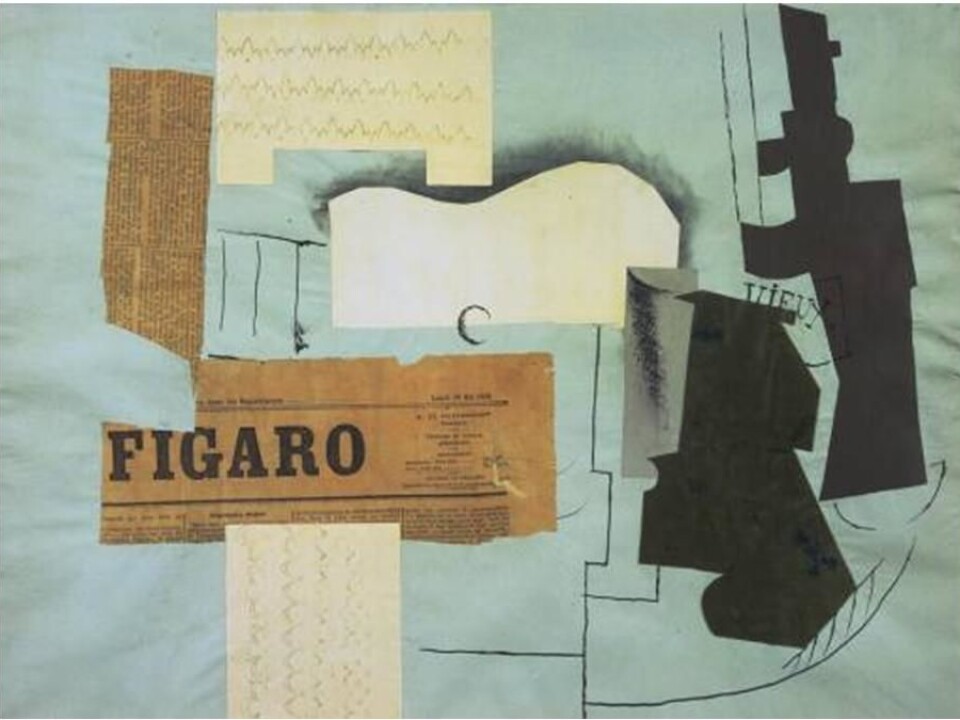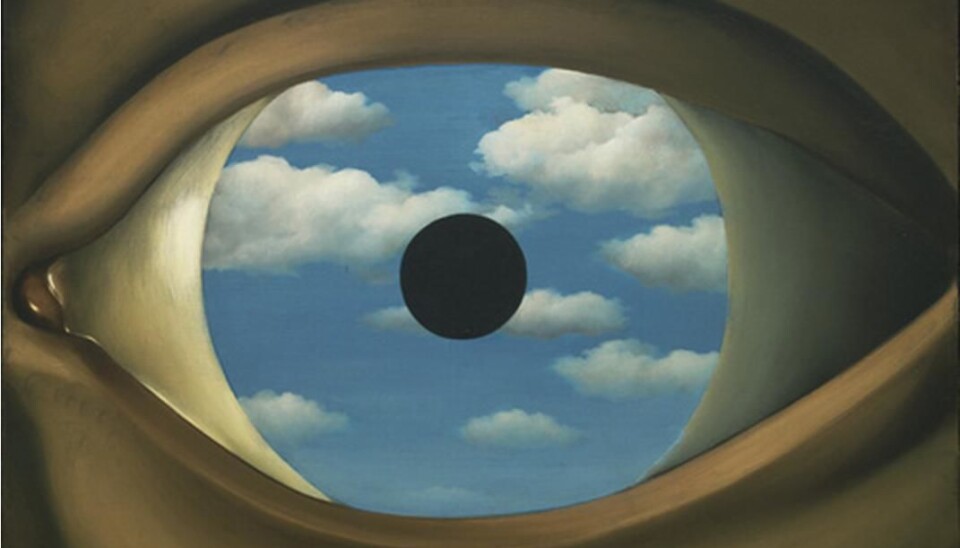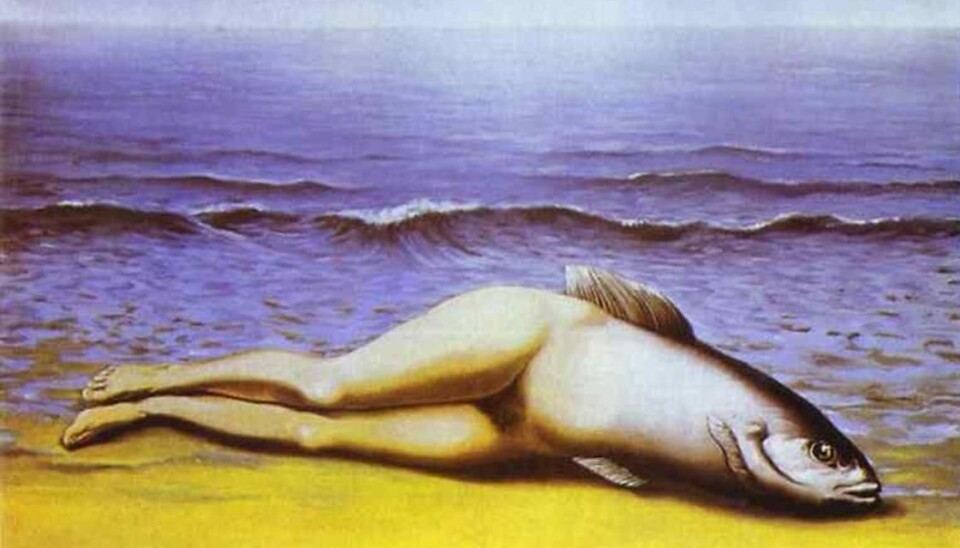
Surrealism is mind-boggling
Beautiful surrealistic pictures can change our impression of the world, says a researcher. See examples of mind-boggling art here.
On the beach lies a woman whose torso is a fish. That’s not something you meet every day.
According to Camilla Skovbjerg Paldam, an assistant professor at the Department of Art History, at Aarhus University’s Institute of Aesthetic Studies, that is precisely the idea with this work of art.
She says this peculiar scene, in the surrealistic painting ‘Collective Invention’ by René Magritte, painted in 1934, aims at expanding our understanding of reality.
“Surrealism has the potential to change our customary images of the world,” says Paldam, who has just published ‘Surrealistiske Collager (Surrealistic Collages)’, a study of surrealism. “Its pictures suck us into worlds that are distorted compared to the one we know. In this way, surrealism opens our eyes to the possibility that things can be different.”
Surrealism couldn’t sell cars

Today we meet surrealism at galleries exhibiting contemporary art. We also see surreal worlds in commercials (see the video). But it was not like that in the 1920s, when surrealism arose.
Surrealism was so strange then that it was completely unable to sell Coca Cola, coffee or cars. And it was a quite conscious choice at the time to ensure that surrealistic art was mystical.
Artists like Salvador Dali, Max Ernst and René Magritte believed that surrealism could bring people in connection with ‘the subconscious’.
The inspiration came from Sigmund Freud, the father of psychoanalysis. He believed that the subconscious tells us deep-seated truths about ourselves; when we recognise these truths we change our view of reality.
How the surrealists contacted ‘the subconscious’
The surrealists tried several methods to contact their ‘subconscious selves’ in order to learn more about themselves and expand their impression of reality:
- Dreams: Freud believed dreams were a direct channel to the events in our ‘subconscious selves’. The surrealists’ pictures are therefore often very dreamy.
- Automatism: A surrealist technique seeking to eliminate conscious thought from the creative process – surrealists just let their pen move over the paper to present ‘messages’ from ‘the subconscious’.
- Hallucinogens: Many have since described LSD trips as ‘a surrealistic experience’ – and that is not just coincidence.
- Collages: The surrealists cut pictures up and put them together in new ways without too much thought, creating new, mind-boggling pictures not normally seen.
Pioneering new view of surrealism
Paldam has studied the surrealists’ collages and she is the first researcher to see how important collage techniques were in reality for surrealistic art.
“I see surrealism through the collages,” she says. “I believe they are the truly central technique for the surrealists.”
Surrealistic art is made up of parts that are not related to each other – like collages.
“When I talk about ‘surrealistic collages’ I don’t mean ‘copy-paste techniques’,” says the researcher. “‘Collage’ should be understood metaphorically. Elements from different contexts are put together in new ways.”
Paintings are collages in reality
Even when the surrealists painted pictures, they were making collages.
“The pictures of Magritte and Dali can be seen as collages that are painted entirely by hand,” says Paldam.
She refers for example to Magritte’s ‘The False Mirror’ (picture 4 in the gallery). Magritte’s picture is in oil on canvas, but nevertheless functions as a collage: the various elements run together, forming a different reality.
“In the eye there are clouds rather than an iris,” she says. “And as in a traditional collage the iris and sky form an image where the various elements go together.”
Surrealists were communists
The surrealists wanted the mystical images in surrealistic pictures and collages to change the world.
“They were politically motivated,” says Paldam. “Most surrealists were communists, but that is not really clear from their art. This was micro-level politics – getting the individual observer to alter his understanding of normality. People had to open up to see the world in a new way.”
Wanted to change everyday routines
The surrealists wanted an end to everyday routines. They hoped their art could give adults the same view of the world that children have.
“To a child, ‘a spoon’ can be many things,” she explains. “An adult would simply see ‘a spoon’. In their collages the surrealists show that the things that surround us can be completely different. If you as an observer realise that, your world has changed.”
The researcher believes the surrealists successfully changed our impression of the world.
“The art of the surrealists in the 1920s and 1930s caused a real stir,” she says. “People could only accept it with difficulty. But today it’s become a completely accepted part of our visual culture. Today, many commercials involve surrealistic imagery. This shows that surrealism is used and has really taken root.”
Read the article in Danish at videnskab.dk
Translated by: Michael de Laine









